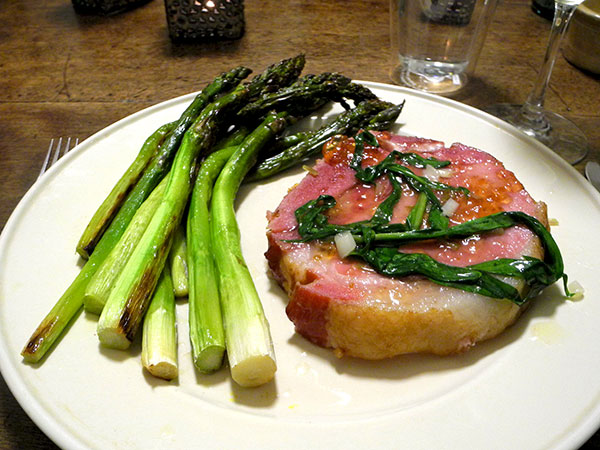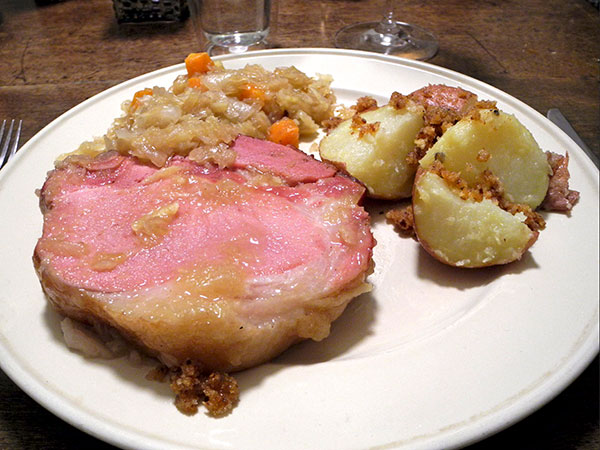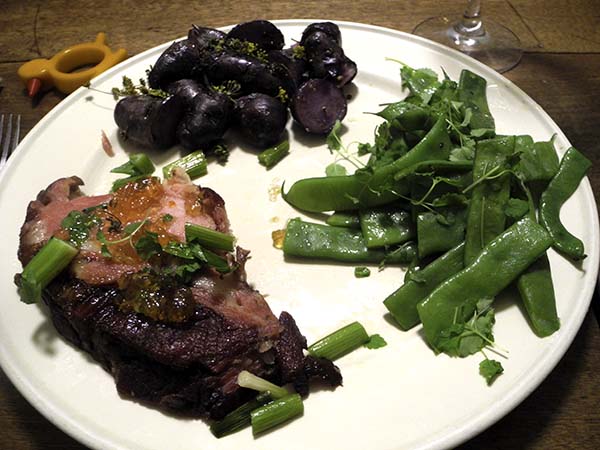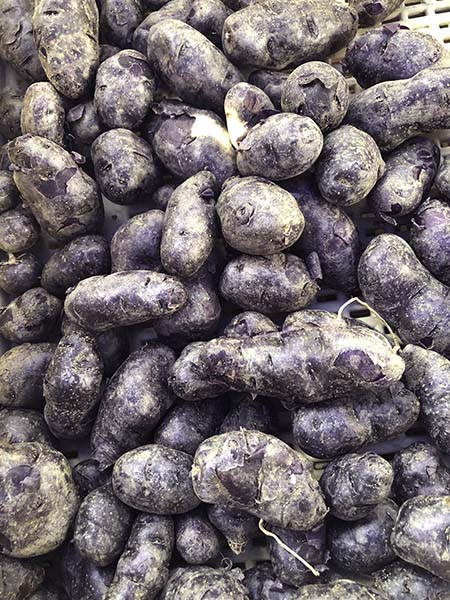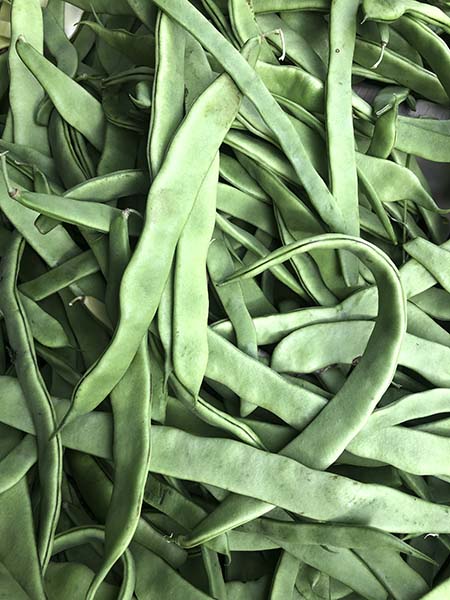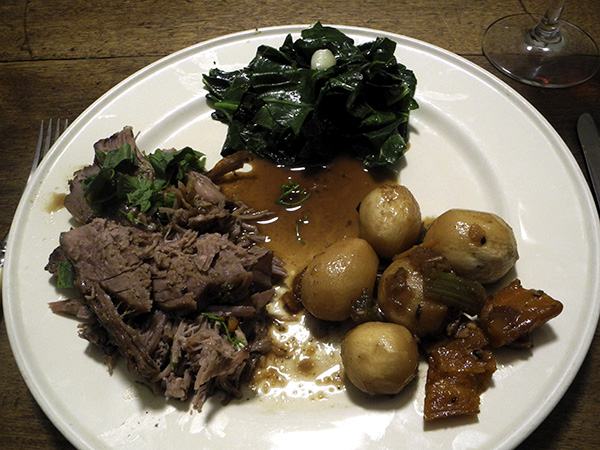
We do eat meat occasionally, but we don’t eat like this very often, and I definitely don’t cook like this very often.
Roasts, stews, and long slow braises however do have their satisfactions, especially in colder realms in and colder months, like, well, parts of New York, this month.
One of the other pleasures of a rich meal is in the planning, the anticipation, and the preparation (the last, especially when there have been several (2) days of preparation.
The music is also a part of the experience, and especially if the windows can be closed. On this night it was Busoni’s “Faust’.
And the serendipity! I love turnips, and on the day before I was to prepare a marinade for this goat leg, when I had not yet decided on what to accompany it with, I came across a table display of white turnips in the Union Square Greenmarket, including a number of quite small ones. They were a size I had never cooked before; I may never even have seen such small turnips before, but I had been aware of their existence for decades. Julia Child wrote about ‘navets’ in her ‘Mastering the Art of French Cooking,
“The turnip is a wonderful vegetable when given the treatment required to bring out its delicious qualities. It wants and needs to absorb butter or meat fats, which is why turnips are particularly succulent when finished off in a stew or a braised dish, or in the juices of roasting meat.”
She was writing something like 60 years ago, mostly for American readers, so she found it necessary to explain that she wasn’t talking about the turnips with which I grew up in the Midwest in the middle of the last century,
“In France rutabagas, or yellow turnips, are practically unheard of as food for humans, but they may be used interchangeably with white turnips.”
She went on to point out that In the country which inspired her career they would be shaped into what was called tourner gousses d’ail ou olives, so of course I always cut my large turnips into little clove of garlic or olive shapes (although larger than the model she referred to).
This past Sunday I finally had the correct size of turnip in my hands, and for the first time ever I simply had to peel them. They started and ended pretty round, so more like olives than gousses d’ail this first time out. Here they are just after I added them to the braise roughly 90 minutes before it was done:
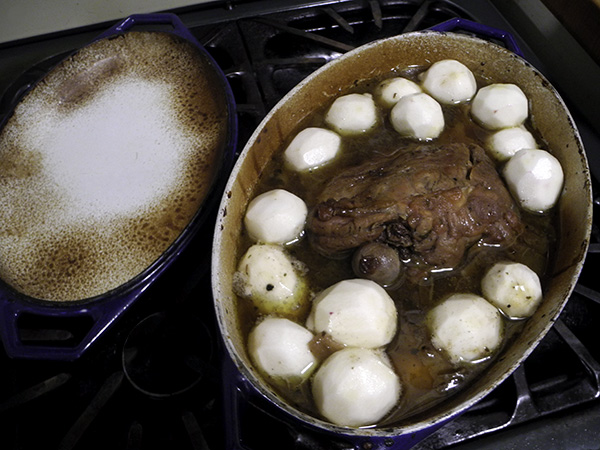
With the turnips, this past Sunday evening, we enjoyed a slowly-cooked leg of goat that had begun with a mirepoix and was braised with the help of some rare aromatic liquids, some of which had been a part of earlier meals.
I began defrosting the 2.64-pound goat leg from Lynnhaven Dairy Goat Farm in the Union Square Greenmarket inside the refrigerator early in the afternoon on Thursday, rubbed the peppercorn/garlic/lemon zest/parsley marinade into the goat leg around noon on Saturday, then returned it to the refrigerator, inside the covered pot in which it would later be braised, removing it 24 hours later, and I placed it in the oven after preparing a mirepoix for it and immersing the goat in 4 different rich liquids shortly after 3 on Sunday.
The pot then remained in the oven for 4 and a half hours.
I used a recipe for braised leg of lamb that had been languishing inside one of my recipe a folders for years; I had spent a good deal of time researching ideas for cooking what isn’t really a very conventional piece of meat. I knew from the beginning however that goat was similar enough to lamb to be readily substituted. In the end I decided to use this fairly straightforward Sam Hayward recipe for a braised leg of lamb, a clipping I had cut out of the New York Times 15 years ago, that I found in front of my nose, in my ‘lamb’ paper file.
The braising liquid was from 4 sources: a good red wine, Marc Isart La Maldicion Tinto de Valdilecha 2017; from Copake Wine Works, a previously-frozen Kassler Braten stock; a veal tongue stock; and a pretty decent low-sodium chicken stock.
Of course the rich, mahogany-colored sauce was pretty awesome.
At the very end I did add something not in the original recipe, a garnish of chopped garlic mustard from Alewife Farm

- one pound of very small white turnips from Norwich Meadows Farm, peeled, joined the goat and the liquids about 90 minutes before the pot was removed from the 250º oven

- one bunch of collard greens, also from Norwich Meadows Farm, stripped of most of their stems, torn into small sections, washed several times and drained, transferred to a smaller bowl very quickly, in order to retain as much of the water clinging to them as possible, braised inside a large, heavy antique tin-lined copper pot in which 2 halved clove of garlic from Chelsea Whole Foods Market had first been allowed to sweat in some olive oil, adding a little of the reserved water along the way as necessary, finished with salt, pepper, finished with a drizzle of olive oil
- the wine was a Greek (Eastern Macedonia and Thrace/Drama) white, En Oeno 2010 (Cabernet Sauvignon 65% / Merlot 30% / Cabernet Franc 5%), from Foragers Market Wine
- the music was a recording of Busoni’s ‘Dr. Faust’, in a performance by the Bavarian Radio Symphony Orchestra conducted by Ferdinand Leitner
